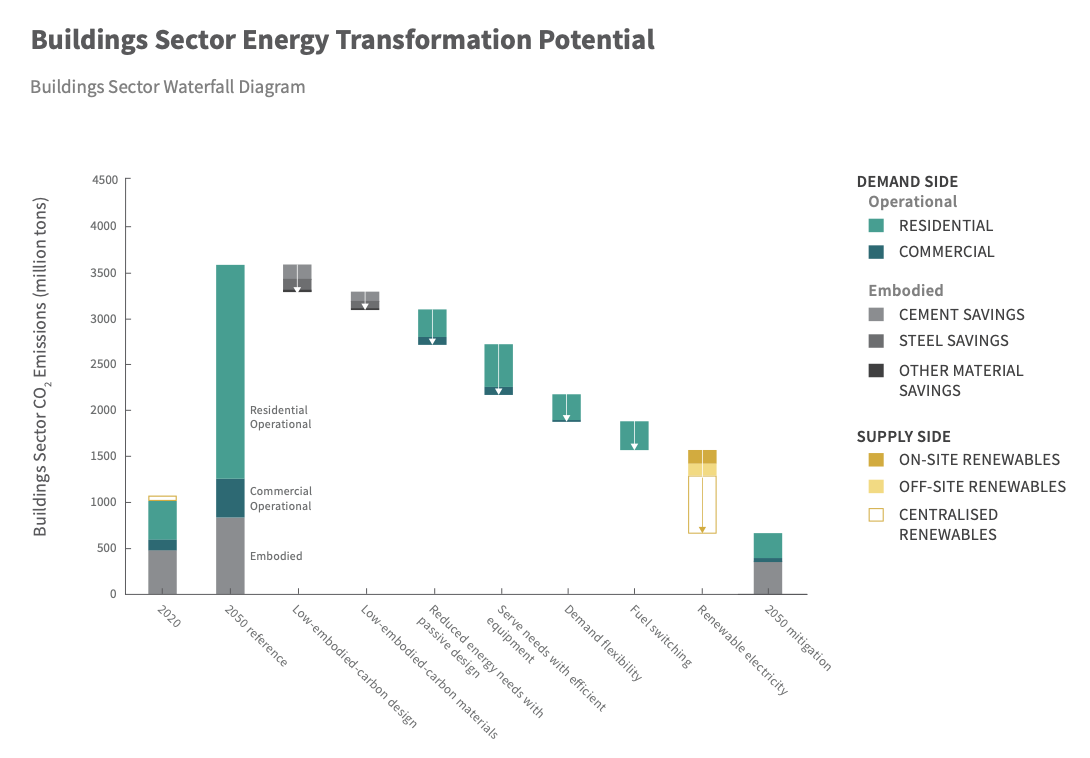
Report | 2022
From the Ground Up
A whole-system approach to decarbonizing India's buildings sector
Building operations in India account for about a third of its energy use. Approximately another 10 percent of the country’s energy is used in the production of building material and construction of new buildings. In the absence of peremptory energy-efficiency improvements and policy measures, the buildings sector is estimated to consume over three times more energy by 2050 than what is consumed today. Notably, there is no energy transformation without a buildings sector transformation.
To meet India’s COP26 goals, its buildings sector must adopt an integrative whole-system approach to cost-effectively address embodied and operational emissions across both the demand side and supply side. This can be done by first utilizing low-carbon design and construction, then reducing the operation building-energy needs, then serving the needs as efficiently as possible, and finally optimizing the demand and providing clean energy supply to the buildings. With this approach, India could cut down its buildings-related emissions by a factor of four in 2050 as compared with a business-as-usual scenario.
Source: Lawrence Berkeley National Laboratory, RMI Analysis
This report equips policymakers, building material manufacturers, building developers, end-users, and NGOs with technologies, policies, and market initiatives that can drive forward transformative solutions for the buildings sector. The solutions highlighted here are a result of decades of global research and collaboration with interdisciplinary thought leaders.
